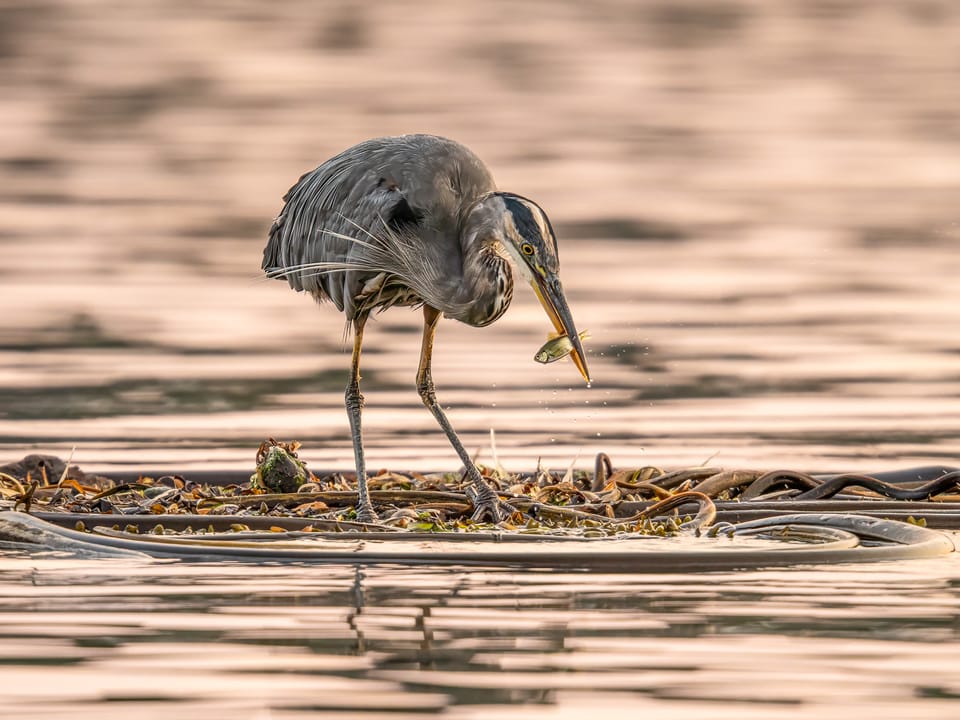EcoWest News, October 28, 2025

Welcome to EcoWest News, a weekly round-up of news and resources that you can put to use in addressing environmental issues and protecting the wild in your community.
Across the West
Saskatchewan’s first breeding bird atlas is now available online. The Atlas is one of the largest volunteer-based initiatives in Saskatchewan’s history and a major new resource for conservation. [Saskatchewan Breeding Bird Atlas]
Indigenous groups in Alberta are protesting a plan to release treated oilsands tailings back into the watershed. [The Energy Mix]
More than 700 large buildings in BC are taking advantage of a retrofit program. One participant said the program gives planners the guidance they need “to time climate and energy upgrades with renewals and rebates.” [The Energy Mix]
A group of young adults from the Syilx Okanagan Nation are restoring salmon habitat. “For the first time in nearly a century, sockeye salmon are freely returning to Okanagan Lake and its tributaries to spawn.” [CBC]
Across Canada
The Hudson Bay peatlands, stretching from northern Manitoba to Quebec, are home to more than 1,000 species of plants and 175 species of birds. The peat stores 5 times as much carbon as the Amazon rainforest but is threatened by mining. [Undark]
Around the World
10 restored wetlands in Illinois, designed to capture nutrient runoff from farms, are permitting researchers to identify best practices for capturing nutrients, evaluate the role of native plants in nutrient capture, and study how wetlands develop over time. [Inside Climate News]
Sustainable solar farms pay attention to the soil by retaining the topsoil, planting pollinator-friendly native flowers and crops, or introducing sheep for grazing and owls to keep down pests that chew wires. [Inside Climate News]
The emissions from major meat and dairy producers rival those of the world’s biggest fossil fuel providers. A lead author on the study says dietary changes could be as significant as putting solar panels on our roofs, at a fraction of the cost. [Desmog]
Making a Difference
A pilot project using Fraser River sediment to restore tidal marshes and bolster Richmond’s flood defences will also “buffer wave energy, store carbon, provide habitat for fish and other species, create recreational opportunities, and can be more flexible in adapting to the changing climate than rock or concrete structures.” [UBC]
A large European recycling project collected and sorted 50,000 garments, separated them by fibre and colour type, and then respun them into new clothing. Each new item contained 70% recycled clothing and proved popular with consumers. [Just Style via Carbon Commentary]
French supplier Hoffmann Green Cement says it has achieved full technical authorisation for the use of its low carbon product to make wind turbine foundations. Their green cement uses 90% less heat and produces no CO2. [Ciments Hoffman via Carbon Commentary]
Biodiversity
Cemeteries can represent some of the last green space in an urban metropolis. Some cemeteries are playing an active role in fostering biodiversity and can serve as role models. [The Revelator]
Conservation planning typically relies on static measures such as the presence of a road. “Accurately tracking human presence over time and across scales could help pinpoint when disturbance peaks, where wildlife encounters are most likely, and how human activity disrupts movement corridors.” [Conservation Corridor]
Nature Photography
Check out these award-winning comedy wildlife photographs – a flying squirrel, a very laidback gibbon, and sea eagles practising kung fu. [The Guardian]
There are even more amazing photographs from the 2025 Wildlife Photographer of the Year competition – a moon-gazing rattlesnake, a caterpillar’s amazing headgear, and a glow-in-the dark carnivorous pitcher plant. [Gizmodo]
The winning entries in a microphotography competition capture the world beyond the human eye, from algae in a drop of water to pollen in a garden spider web. [DP Review]
Photo credit: https://www.flickr.com/photos/apmckinlay/54761286452/
EcoFriendly West informs and encourages initiatives that support Western Canada’s natural environment through its online publication and the Nature Companion website/app. Like us on Facebook, follow us on BlueSky, X, and Mastodon, or subscribe by email.

Member discussion